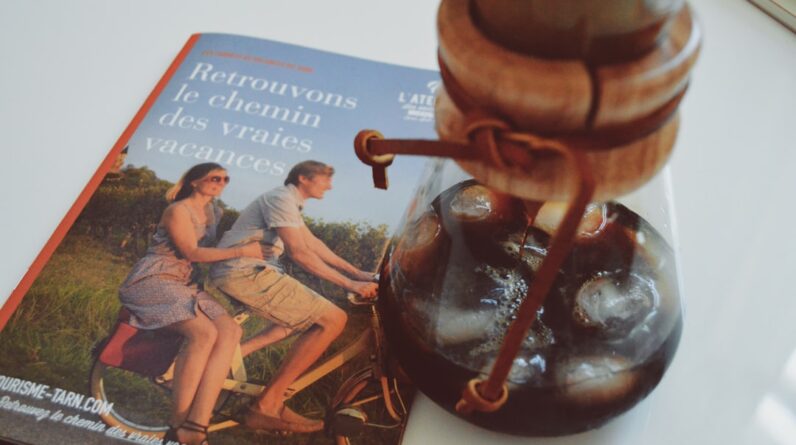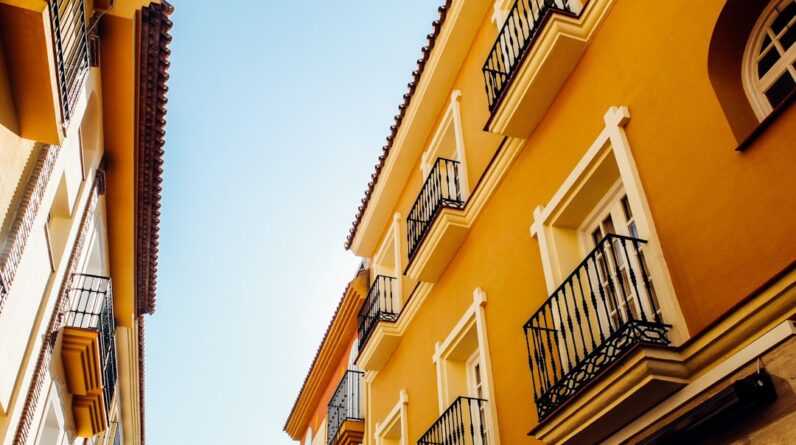
To truly appreciate the rich tapestry of Spanish culture, you must first delve into its history, which is a complex narrative woven from various influences and events. Spain’s history is marked by the coexistence of diverse cultures, including the Iberians, Celts, Romans, Visigoths, and Moors. Each of these groups left an indelible mark on the land and its people.
The Roman Empire’s influence is particularly significant, as it introduced infrastructure, language, and governance that shaped the future of the region. As you explore ancient ruins and historical sites, you will find remnants of this era that speak volumes about Spain’s past. The Reconquista, a pivotal period in Spanish history, saw the gradual reclamation of the Iberian Peninsula from Muslim rule, culminating in 1492 with the fall of Granada.
This event not only marked the end of centuries of Islamic influence but also set the stage for Spain’s emergence as a global power during the Age of Exploration. As you learn about figures like Christopher Columbus, who sailed under the Spanish flag to discover the New World, you will understand how Spain’s colonial ambitions shaped its identity and legacy. The intertwining of these historical threads creates a narrative that is both fascinating and essential for anyone looking to grasp the essence of Spain today.
Key Takeaways
- Spain has a rich and diverse history, with influences from the Romans, Moors, and Catholic monarchs shaping its culture.
- Spanish cuisine is known for its use of fresh ingredients, olive oil, and a wide variety of dishes such as paella, tapas, and churros.
- Spanish art and architecture are characterized by the works of famous artists like Gaudi and Velazquez, and iconic landmarks like the Alhambra and Sagrada Familia.
- Spanish festivals and celebrations, such as La Tomatina and Semana Santa, are vibrant and colorful expressions of the country’s culture and traditions.
- The Spanish language has various dialects and is an integral part of the country’s identity, with opportunities to learn and practice it through language immersion programs.
Exploring Spanish Cuisine and Culinary Traditions
Spanish cuisine is a vibrant reflection of the country’s diverse regions and cultures. As you embark on a culinary journey through Spain, you will discover that food is not merely sustenance; it is a celebration of life and community. From the bustling tapas bars in Seville to the seafood markets in Galicia, each dish tells a story rooted in local traditions and ingredients.
You might find yourself savoring paella in Valencia, where this iconic rice dish originated, or indulging in pintxos in the Basque Country, where small bites are paired with local wines. The culinary traditions of Spain are deeply intertwined with its history and geography. The Mediterranean climate allows for an abundance of fresh produce, while centuries of trade have introduced spices and flavors from around the world.
As you explore regional specialties, you will encounter dishes like gazpacho from Andalusia, rich in tomatoes and peppers, or cocido from Madrid, a hearty stew that warms the soul. Each meal is often accompanied by a sense of ritual, whether it’s sharing tapas with friends or enjoying a leisurely Sunday family lunch. By immersing yourself in these culinary experiences, you will gain a deeper appreciation for Spain’s cultural heritage.
Immersing Yourself in Spanish Art and Architecture
Spain’s artistic legacy is as diverse as its history, encompassing a wide range of styles and movements that have evolved over centuries. As you wander through cities like Barcelona and Madrid, you will be captivated by the stunning architecture that reflects the country’s artistic evolution. From the intricate Gothic cathedrals to the whimsical designs of Antoni Gaudí, such as the Sagrada Família, each structure tells a story of creativity and innovation.
You may find yourself marveling at how these architectural wonders harmoniously blend with their surroundings, creating a unique sense of place. In addition to architecture, Spain boasts a rich tradition of visual arts that spans from the Renaissance to contemporary times. The works of masters like Velázquez, Goya, and Picasso are housed in world-renowned museums such as the Prado and the Reina Sofía.
As you explore these galleries, you will encounter masterpieces that challenge perceptions and evoke deep emotions. Engaging with Spanish art allows you to connect with the cultural zeitgeist of different eras and understand how artists have responded to social and political changes throughout history. This immersion in art not only enriches your understanding of Spain but also inspires your own creative journey.
Learning about Spanish Festivals and Celebrations
Spanish festivals are vibrant expressions of culture and community that reflect the country’s rich traditions and regional diversity. As you participate in these celebrations, you will experience firsthand the joy and enthusiasm that permeate Spanish life. One of the most famous festivals is La Tomatina in Buñol, where thousands gather to engage in an epic tomato fight.
This playful event showcases the spirit of camaraderie and fun that characterizes many Spanish festivities. Similarly, the Running of the Bulls in Pamplona during San Fermín draws crowds from around the world, blending tradition with adrenaline-fueled excitement. Throughout Spain, each region boasts its own unique festivals that highlight local customs and heritage.
For instance, Semana Santa (Holy Week) is celebrated with solemn processions in Seville, where elaborate floats adorned with religious icons are carried through the streets. In contrast, Las Fallas in Valencia features spectacular fireworks and massive sculptures that are ultimately set ablaze in a dramatic finale. By immersing yourself in these festivals, you will not only witness breathtaking displays but also gain insight into the values and beliefs that shape Spanish society.
These celebrations foster a sense of belonging and community that resonates deeply with both locals and visitors alike.
Embracing the Spanish Language and Dialects
The Spanish language is a beautiful tapestry woven from various dialects and regional variations that reflect Spain’s cultural diversity. As you embark on your journey to learn Spanish, you will discover that language is more than just a means of communication; it is a gateway to understanding the nuances of culture and identity. From Castilian Spanish spoken in Madrid to Catalan in Barcelona and Galician in Galicia, each dialect carries its own unique flavor and history.
Embracing these linguistic differences allows you to connect more deeply with local communities. Learning Spanish opens up a world of opportunities for personal growth and cultural exchange. As you practice speaking with locals or engage in conversations at cafés or markets, you will find that language fosters connections that transcend borders.
The rhythm and melody of spoken Spanish can be enchanting, making it an enjoyable experience to learn. Additionally, understanding idiomatic expressions and colloquialisms enriches your comprehension of cultural references found in literature, music, and everyday life. By immersing yourself in the language, you not only enhance your travel experience but also cultivate meaningful relationships with those you meet along the way.
Getting to Know Traditional Spanish Music and Dance
Spanish music and dance are integral components of the country’s cultural identity, reflecting its diverse influences and regional variations. As you explore this vibrant aspect of Spanish culture, you will encounter genres ranging from flamenco to salsa, each with its own unique rhythms and styles. Flamenco, originating from Andalusia, is characterized by passionate guitar playing, soulful singing, and intricate footwork that tells stories of love, loss, and resilience.
Attending a live flamenco performance allows you to witness the raw emotion and artistry that define this traditional art form. Beyond flamenco, Spain boasts a rich musical heritage that includes folk traditions from various regions. In Galicia, for example, traditional bagpipe music accompanies lively dances during local festivals.
The interplay between music and dance creates an immersive experience that invites participation and celebration. As you engage with these art forms—whether by taking dance lessons or simply enjoying performances—you will gain insight into the cultural significance they hold for communities across Spain. Music and dance serve as powerful expressions of identity that unite people through shared experiences.
Appreciating Spanish Literature and Poetry
Spanish literature is a treasure trove of creativity that spans centuries and encompasses a wide range of genres and styles. As you delve into this literary landscape, you will encounter works by renowned authors such as Miguel de Cervantes, whose masterpiece “Don Quixote” remains a cornerstone of world literature. This novel not only explores themes of idealism and reality but also reflects the complexities of human nature—a theme that resonates across cultures and time periods.
In addition to classic literature, contemporary Spanish writers continue to push boundaries and explore new narratives. Authors like Javier Marías and Rosa Montero offer fresh perspectives on modern life while drawing on historical contexts. Poetry also holds a special place in Spanish culture; poets like Federico García Lorca capture the essence of emotion through evocative imagery and lyrical language.
Engaging with Spanish literature allows you to connect with the thoughts and feelings of individuals from different eras while gaining insight into societal issues that persist today. By immersing yourself in these literary works, you will enrich your understanding of Spain’s cultural heritage.
Studying the Influence of Religion in Spanish Culture
Religion has played a significant role in shaping Spanish culture throughout history, influencing everything from art to festivals to social norms. The Catholic Church has been particularly influential since its establishment as a dominant force during the Reconquista. As you explore Spain’s religious heritage, you will encounter stunning cathedrals like La Sagrada Familia in Barcelona or the Cathedral of Santiago de Compostela—each serving as a testament to faith expressed through architecture.
The impact of religion extends beyond grand structures; it permeates daily life in various ways. Many traditional festivals have religious origins or significance, such as Semana Santa (Holy Week) celebrations across the country. These events often involve elaborate processions that reflect deep devotion while fostering community spirit among participants.
By studying religion’s influence on Spanish culture, you will gain insight into how faith shapes values, traditions, and social interactions within communities—an essential aspect for anyone seeking to understand contemporary Spain.
Understanding the Importance of Family and Social Structure in Spain
Family holds a central place in Spanish society; it serves as both an emotional support system and a social network that shapes individual identities. As you immerse yourself in Spanish culture, you’ll notice how familial bonds extend beyond immediate relatives to include extended family members—often gathering for meals or celebrations together regularly. This emphasis on family creates strong ties within communities while fostering a sense of belonging among individuals.
Social structures also play an important role in shaping interactions within society; traditional values often emphasize respect for elders while promoting close-knit relationships among peers. You may find that social gatherings frequently revolve around food—whether it’s sharing tapas at a bar or enjoying Sunday lunch with family—highlighting how communal experiences strengthen connections between people. By understanding these dynamics within Spanish culture, you’ll appreciate how relationships influence daily life while enriching your own experiences during your time in Spain.
Exploring Regional Differences and Traditions in Spain
Spain is a country characterized by remarkable regional diversity; each autonomous community boasts its own unique traditions, languages, cuisines, and customs that contribute to its rich cultural mosaic. As you travel through different regions—from Catalonia to Andalusia—you’ll discover distinct identities shaped by historical influences specific to each area. For instance, Catalonia has its own language (Catalan) alongside Spanish while celebrating unique festivals like La Mercè—showcasing local pride through vibrant parades.
Regional differences extend beyond language; they manifest themselves in culinary traditions as well—each area offering specialties reflective of local ingredients available due to geography or climate conditions. In Galicia along the northwest coast, seafood reigns supreme while Andalusia is known for its tapas culture featuring olives or cured meats served alongside wine or sherry—each dish telling stories rooted deeply within their respective regions’ histories. By exploring these regional differences firsthand—whether through food tours or cultural exchanges—you’ll gain insight into how geography shapes identity while fostering appreciation for diversity within Spain itself.
Participating in Cultural Exchange Programs and Homestays in Spain
Engaging directly with local communities through cultural exchange programs or homestays provides an invaluable opportunity for immersive learning experiences during your time in Spain. These programs allow you not only to practice language skills but also to forge meaningful connections with locals who can share their perspectives on daily life—offering insights into customs often overlooked by tourists. Living with host families enables deeper engagement beyond surface-level interactions; you’ll have opportunities to participate actively in family activities—from cooking traditional meals together to celebrating local festivals—creating lasting memories while fostering cross-cultural understanding between yourself and your hosts.
By participating actively within these exchanges—whether through volunteering initiatives or educational programs—you’ll cultivate friendships while gaining firsthand knowledge about contemporary issues facing communities today—enriching both your personal growth journey as well as contributing positively towards fostering global connections across cultures. In conclusion, immersing yourself fully into various aspects surrounding Spanish culture—from history through cuisine all way down towards literature—will undoubtedly enhance your appreciation towards this beautiful country while creating unforgettable memories along way!
If you are interested in learning more about Spanish culture, you may also want to check out this article on the 20 best sources for news in Spanish. This resource can help you stay up to date on current events and trends in Spanish-speaking countries, providing valuable insights into the cultural landscape. By immersing yourself in Spanish news, you can deepen your understanding of the language and its cultural context.
FAQs
What is Spanish culture?
Spanish culture refers to the customs, traditions, and way of life of the people of Spain. It encompasses a rich history, art, music, dance, cuisine, and festivals.
Why is it important to learn Spanish culture?
Learning Spanish culture is important for anyone interested in understanding the customs, traditions, and values of the Spanish-speaking world. It can also help in language learning and building relationships with Spanish-speaking people.
How can I learn Spanish culture?
You can learn Spanish culture by immersing yourself in the language, participating in cultural events, trying Spanish cuisine, learning about Spanish history and art, and interacting with Spanish-speaking people.
What are some key aspects of Spanish culture?
Key aspects of Spanish culture include flamenco music and dance, bullfighting, siestas, tapas, fiestas, and the influence of Roman, Moorish, and Catholic traditions.
Where can I experience Spanish culture?
You can experience Spanish culture by visiting Spain, attending Spanish cultural events and festivals, visiting Spanish restaurants and markets, and interacting with Spanish-speaking communities.





